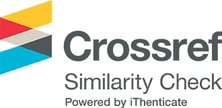Mendeteksi Indikasi Manipulasi Laporan Keuangan Menggunakan Model Altman dan Beneish
DOI:
10.33395/owner.v9i2.2674Keywords:
Altman Z-score, Beneish M-score, Fradulent Financial Reporting, Financial Distress, Fraud Triangle, Ratio AnalysisAbstract
The study focuses on the relationship between financial distress and indications of financial statement manipulation by PT AISA. Until 2017, PT AISA was in good financial condition as indicated by the published financial statements and the unqualified opinion obtained from the external auditor. However, in 2018, PT AISA experienced a default which resulted in the suspension of shares from the IDX and default status on the bond rating from PEFINDO. In this case, an investment was made by EY which showed indications of financial statement manipulation by PT AISA. The AISA case was made the subject of research using quantitative methods. The data used came from PT AISA's financial statements since the IPO in 2003 to 2017. The Z-score model (Altman, 1968) and M-score (Beneish, 1999) were used to analyze the financial statement data. The results of the analysis show that the use of both models simultaneously can identify the relationship between financial statement manipulation and financial performance.
Downloads
Plum-X Analityc
References
ACFE. (2020). Report To The Nations. https://acfepublic.s3-us-west-2.amazonaws.com/2020-Report-to-the-Nations.pdf
Akbar, T. (2017). THE DETERMINATION OF FRAUDULENT FINANCIAL REPORTING CAUSES BY USING PENTAGON THEORY ON MANUFACTURING COMPANIES IN INDONESIA. International Journal of Business, Economics and Law, 14.
Apoorva, D. V., Sneha, P. C., & Namratha, M. (2019). Application of Altman Z Score Model on Selected Indian Companies to Predict Bankruptcy. International Journal of Business and Management Invention (IJBMI) ISSN, 77–82. www.ijbmi.org
Dalnial, H., Kamaluddin, A., Sanusi, Z. M., & Khairuddin, K. S. (2014). Detecting Fraudulent Financial Reporting through Financial Statement Analysis. Journal of Advanced Management Science, 2(1), 17–22. https://doi.org/10.12720/joams.2.1.17-22
Diany, Y. A., & Ratmono, D. (2014). DETERMINAN KECURANGAN LAPORAN KEUANGAN:PENGUJIAN TEORI FRAUD TRIANGLE. DIPONEGORO JOURNAL OF ACCOUNTING, 3(2), 1–9. http://ejournal-s1.undip.ac.id/index.php/accounting
Free, C. (2015). Looking through the fraud triangle: A review and call for new directions. Meditari Accountancy Research, 23(2), 175–196. https://doi.org/10.1108/MEDAR-02-2015-0009
Hamzah, R. S., & Annisa, M. L. (2022). Altman’s Z”-Scores for financial distress predictions among food and beverages industry in Indonesia. Owner : Riset Dan Jurnal Akuntansi, 6(1), 1056-1068. https://doi.org/10.33395/owner.v6i1.696
Kukreja, G., Gupta, S. M., Sarea, A. M., & Kumaraswamy, S. (2020). Beneish M-score and Altman Z-score as a catalyst for corporate fraud detection. Journal of Investment Compliance, 21(4), 231–241. https://doi.org/10.1108/joic-09-2020-0022
Maccarthy, J. (2017). Using Altman Z-score and Beneish M-score Models to Detect Financial Fraud and Corporate Failure: A Case Study of Enron Corporation. International Journal of Finance and Accounting, 6(6), 159–166. https://doi.org/10.5923/j.ijfa.20170606.01
Felicia Nathania. (2024). Unveiling the Motivation of Fraudulent Financial Statement in ENVY: Fraud Triangle Theory. Owner : Riset Dan Jurnal Akuntansi, 8(1), 284-288. https://doi.org/10.33395/owner.v8i1.1923
Riawati, G. & Hermawan, A. A. (2024). Evaluasi M-Score dan ICOFR PT X. E-Jurnal Akuntansi, 34(6), 1370-1384. https://doi.org/10.24843/EJA.2024.v34.i06.p02
Suhardoyo, S., & Muktiningrum, M. (2024). Prediksi Financial Distress Pada Perusahaan Tektil Yang Terdaftar Di Bursa Efek Indonesia (BEI) Melalui Analisis Rasio Keuangan. J-CEKI : Jurnal Cendekia Ilmiah, 3(6), 6462–6469. https://doi.org/10.56799/jceki.v3i6.5519
Utie, M. S., & Harahap, S. N. (2022). Analysis of Fraudulent Financial Reporting Using the Fraud Triangle (Study Case: PT Tiga Pilar Sejahtera Tbk). Budapest International Research and Critics Institute-Journal (BIRCI-Journal), 5(1), 1909-1917.
Zainudin, E. F., & Hashim, H. A. (2016). Detecting fraudulent financial reporting using financial ratio. Journal of Financial Reporting and Accounting, 14(2), 266–278. https://doi.org/10.1108/jfra-05-2015-0053
Downloads
Published
How to Cite
Issue
Section
License
Copyright (c) 2025 Maulida Salmi Utie, Siti Nurwahyuningsih Harahap

This work is licensed under a Creative Commons Attribution-NonCommercial 4.0 International License.
















